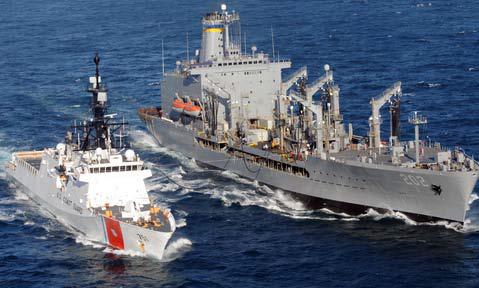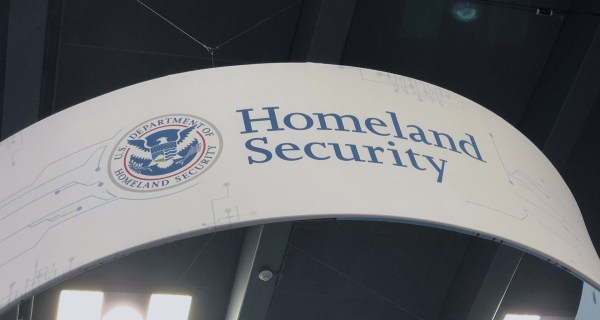U.S. Coast Guard Commandant Admiral Robert Papp testified before the Senate Appropriations Subcommittee on Homeland Security, addressing the President Obama’s Fiscal Year 2013 USCG budget request.
Introduction
Good morning Madam Chair and distinguished members of the Committee. Thank you for the continuing support you have shown to the men and women of the United States Coast Guard, including the funding provided in the Fiscal Year (FY) 2012 Consolidated Appropriations Act to recapitalize the aging fleet and sustain front-line operations.
This year marks our 222nd year of protecting Americans on the sea, America from threats delivered by the sea and the sea itself. Throughout this period, our unique authorities, capable assets and determined personnel have adapted to meet the Nation’s evolving maritime safety, security and stewardship needs. We are locally based, nationally deployed and globally connected.
I am here today to discuss the Coast Guard’s FY 2013 Budget Request. Before discussing the details of the request, I would like to take this opportunity to discuss some of the Coast Guard’s recent operational successes, our value and role in the Department of Homeland Security, and in service to the Nation.
Over the past year, Coast Guard men and women – Active Duty, Reserve, Civilian and Auxiliarists alike – continued to deliver premier service to the public. In the Midwest, Coast Guard Disaster Assistance Response Teams were among the first responders to residential areas impacted by severe flooding. In the Western Caribbean, Coast Guard Medium Endurance Cutters and Seagoing Buoy Tenders interdicted and supported the multi-agency recovery of Self- Propelled Semi-Submersible vessels. These “drug subs” are designed for one specific purpose – to deliver multi-ton loads of pure cocaine bound for our shores, streets and schools. While the use of drug subs is increasingly popular in the Eastern Pacific, these interdictions mark the first time we have encountered drug subs in the Western Caribbean. In the Arctic, the Coast Guard icebreaker HEALY and her crew broke their way through 800 miles of Bering Sea ice to enable the Motor Vessel Renda to deliver 1.3 million gallons of fuel to the 3,600 people of Nome, Alaska after extreme weather and ice formation precluded safe delivery of this vital commodity.
Last year, the Coast Guard responded to 20,510 Search and Rescue cases and saved over 3,800 lives; seized over 75 metric tons of cocaine and 18 metric tons of marijuana destined for the United States; seized 40 vessels, detained 191 suspected smugglers; conducted over 10,400 annual inspections of U.S. flagged vessels; conducted 6,200 marine casualty investigations; conducted more than 9,000 Port State Control and Security examinations on foreign flagged vessels; and responded to 3,000 pollution incidents.
I am pleased to advise you that the Coast Guard recently accepted delivery of the lead Sentinel Class Fast Response Cutter, the BERNARD C. WEBBER. Sixty years ago, on February 18, 1952, Boatswain’s Mate First Class Webber and his three-man 36-foot motorized lifeboat crew rescued 32 souls, one by one, from the 503-foot Tank Vessel Pendleton after it broke in two in a Nor’easter off Cape Cod featuring 60-foot seas, 70-knot winds and blinding snow. Petty Officer Webber’s seamanship, courage and leadership serve as an enduring reminder of the Coast Guard’s value to the Nation.
The FY 2013 Budget represents a critical inflection point – the ships, boats and aircraft we are investing in today are vital to ensuring the Coast Guard remains ready to respond to maritime threats and hazards, well into the future. Indeed, these resources will not just shape, but in a large part will define the Coast Guard’s next fifty years of capability. We are also exercising resource and operational stewardship while simultaneously preparing for the future. We recently completed a review of doctrine, policy, and our operations and mission support structure to ensure we are focusing resources and forces where they are most needed. This prioritization is reflected in our FY 2013 budget submission, which focuses on balancing current operations with our need to recapitalize for the future. However, we must do so in a manner that sustains our capability to safeguard lives, protect the environment and facilitate safe and secure commerce throughout our Maritime Transportation System – a system which carries 95 percent of all U.S. foreign trade and accounts for nearly $700 billion of the U.S. gross domestic product and 51 million U.S. jobs.
The Coast Guard’s value and role:
- We protect those on the sea: leading responses to maritime disasters and threats, ensuring a safe and secure Maritime Transportation System, preventing incidents, and rescuing those in distress.
- We protect America from threats delivered by sea: enforcing laws and treaties, securing our ocean resources, and ensuring the integrity of our maritime domain from illegal activity.
- We protect the sea itself: regulating hazardous cargo transportation, holding responsible parties accountable for environmental damage and cleanup, and protecting living marine and natural resources.
FY 2013 Request
In recognition of the current fiscal environment, the Coast Guard’s FY 2013 Budget strikes the optimal balance between current operations and investment in future capability to sustain the Coast Guard’s ability to execute its missions, and address the most pressing operational requirements. This budget request includes investment in new assets which are critical to ensure the Coast Guard remains capable of carrying out its missions today and well into the future. Accordingly, the Coast Guard’s FY 2013 Budget priorities are to:
- Responsibly Rebuild the Coast Guard
- Efficiently Preserve Front-line Operations
- Strengthen Resource and Operational Stewardship
- Prepare for the Future
Highlights from our request are included in Appendix I.
The Coast Guard Cutter WAESCHE conducts at-sea refueling operations for the first time in the ship’s history.Responsibly Rebuild the Coast Guard
The Coast Guard continues to focus resources on recapitalizing cutters, boats, aircraft, and Command, Control, Communications, Computers, Intelligence, Surveillance, and Reconnaissance systems, critical to sustaining the ability to accomplish missions well into the future. This budget request fully funds the sixth National Security Cutter, strengthening the Coast Guard’s long-term major cutter recapitalization effort to replace its aged, obsolete High Endurance Cutter fleet as quickly as possible. The FY 2013 investments are critical to replacing and sustaining aging in-service assets, and are key to maintaining future capability.Efficiently Preserve Front-line Operations
To ensure the Coast Guard remains ready to meet the Nation’s safety and security requirements, the FY 2013 Budget request provides a balance between sustaining front-line operational capacity and rebuilding the Coast Guard. The FY 2013 Budget provides funding to operate and maintain Coast Guard assets and sustain essential front-line operations. Key investments include funding the operation of new assets delivered through acquisition programs and investment in military workforce pay and benefits.Strengthen Resource and Operational Stewardship
The FY 2013 Budget meets essential mission needs while simultaneously preparing for new and exigent demands. Through a comprehensive internal review of doctrine, policy, operations and mission support structure, the Coast Guard has focused resources and forces where they are most needed, while recognizing the current fiscal challenges. The FY 2013 budget also proposes administrative and programmatic reductions to improve efficiency and service delivery, while continuing investment in Coast Guard activities that provide the highest return on investment.Prepare for the Future
The Coast Guard continuously identifies and prepares for emerging maritime threats facing the Service and the Nation. The FY 2013 Budget request recognizes the criticality of the Arctic as a strategic National priority, given increasing presence and interest by other Nations, the preponderance of natural resources available in this region, and increasing maritime commercial and recreational activity.Conclusion
The role of the Coast Guard has never been more important. As we have done for well over two centuries, we remain “Always Ready” to meet the Nation’s ever-broadening maritime needs, supported by the FY 2013 request. I request your full support for the funding requested for the Coast Guard in the President’s FY 2013 Budget. Again, thank you for the opportunity to testify before you today. I am pleased to answer your questions.
Appendix I – Fiscal Year 2013 Budget Request
RESPONSIBLY REBUILD THE COAST GUARD
Surface Assets
$879.5M (0 FTE)The budget provides $879.5 million for surface asset recapitalization and sustainment initiatives, including:
- National Security Cutter (NSC) – Provides production funding for the sixth NSC; NSCs will replace the aging fleet of High Endurance Cutters, first commissioned in 1967. The acquisition of NSC-6 is vital for performing DHS missions in the far off-shore regions, including the harsh operating environment of the Pacific Ocean and Bering Sea, as well as providing for robust homeland security contingency response.
- Fast Response Cutter (FRC) – Provides production funding to procure Fast Response Cutters (FRC) 19-20. These assets replace the aging fleet of 110-foot patrol boats, and provide the coastal capability to conduct Search and Rescue operations, enforce border security, interdict drugs, uphold immigration laws, prevent terrorism, and ensure resiliency to disasters. Hulls #17 – 20 will be procured in FY 2013 using FY 2012 and FY 2013 funds, maintaining FRC production at the current rate.
- Offshore Patrol Cutter (OPC) – Continues initial acquisition work and design of the OPC. The OPC will replace the Medium Endurance Cutter class to conduct missions on the high seas and coastal approaches.
- Medium Endurance Cutter (MEC) – Completes the Mission Effectiveness Program for the 270-foot MECs at the Coast Guard Yard.
- Survey and Design – Initiates survey and design work for a mid-life availability on the 175-foot Coastal Buoy Tender class.
Air Assets
$74.5M (0 FTE)The budget provides $74.5 million for the following air asset recapitalization or enhancement initiatives, including:
- HC-144 – Funds production of the 18th HC-144A Maritime Patrol Aircraft. The HC-144A fleet will provide enhanced maritime surveillance and medium airlift capability over the legacy HU-25 aircraft that they replace. The HU-25s will all be removed from service by the end of their planned service life, in FY 2014.
- HH-65 – Funds sustainment of key components requiring recapitalization.
Asset Recapitalization – Other
$76.5M (0 FTE)The budget provides $76.5 million for the following equipment and services:
- Command, Control, Communications, Computers, Intelligence, Surveillance, and Reconnaissance (C4ISR) – Deploys standardized C4ISR capability to newly fielded NSCs, C-130s and MPAs, and develops C4ISR capability for other new assets.
- CG-Logistics Information Management System – Continues development and prototype deployment to Coast Guard operational assets and support facilities.
- Nationwide Automatic Identification System (NAIS) – Continues recapitalizing the existing interim NAIS system in 58 ports and 11 coastal areas by replacing it with the permanent solution design and technology via the core system upgrade.
Shore Units and Aids to Navigation (ATON)
$69.4M (0 FTE)The budget provides $69.4 million to recapitalize shore infrastructure for safe, functional and modern shore facilities that effectively support Coast Guard assets and personnel:
- Station New York Boat Ramp – Constructs a boat ramp for launching small boats at Station New York, NY, for both the Station and Maritime Safety and Security Team New York.
- Air Station Barbers Point – Constructs an aircraft rinse rack facility to properly and effectively rinse C-130 aircraft at Air Station Barbers Point.
- Major Acquisition Systems Infrastructure – Commences construction of piers and support facilities for three FRC homeports; construction of an MPA training facility at Aviation Technical Training Center in Elizabeth City, NC; construction of MPA maintenance facility hangar at the Aviation Logistics Center at Elizabeth City, NC.
- ATON Infrastructure – Completes improvements to short-range aids and infrastructure to improve the safety of maritime transportation.
Personnel and Management
$117.4M (842 FTE)The budget provides $117.4 million to provide pay and benefits for the Coast Guard’s acquisition workforce.
EFFICIENTLY PRESERVE FRONT-LINE OPERATIONS
Pay & Allowances
$88.9M (0 FTE)The budget provides $88.9 million to fund the civilian pay raise and maintain parity of military pay, allowances, and health care with the DoD. As a branch of the Armed Forces of the United States, the Coast Guard is subject to the provisions of the National Defense Authorization Act, which includes pay and personnel benefits for the military workforce.
Annualization of Fiscal Year 2012
$54.2M (260 FTE)The budget provides $54.2 million to continue critical FY 2012 initiatives.
Operating and Maintenance Funds for New Assets
$47.6M (139 FTE)The budget provides a total of $47.6 million to fund operations and maintenance of shore facilities and cutters, boats, aircraft, and associated C4ISR subsystems delivered through acquisition efforts. Funding is requested for the following assets and systems:
- Shore Facilities – Funding for the operation and maintenance of shore facility projects scheduled for completion prior to FY 2013.
- Response Boat-Medium – Funding for operation and maintenance of 30 boats.
- Interagency Operations Center (IOC) – Funding for the operation and maintenance of the Watch Keeper system.
- Rescue 21 (R21) – Funding for the operation and maintenance of the R21 System in Sector Sault Ste. Marie and Sector Lake Michigan.
- FRC – Operating and maintenance funding for FRCs #8-9 and funding for crews #9-10. These assets will be homeported in Key West, FL. Funding is also requested for shore-side maintenance personnel needed to support FRCs.
- HC-144A MPA – Operating and maintenance funding for aircraft #14-15 and personnel funding to operate and support aircraft #15-16.
- Air Station Cape Cod Transition – Funding to complete a change in aircraft type allowance, and programmed utilization rates.
- Training Systems for Engineering Personnel – Funding to support NSC and FRC training requirements at Training Center Yorktown.
- HC-130H Flight Simulator Training – Funding to support aircraft simulator training for HC-130H pilots, flight engineers, and navigators.
St. Elizabeths Headquarters Consolidation
$24.5M (0 FTE)Provides funding to support the Coast Guard’s relocation to the DHS consolidated headquarters at the St. Elizabeths Campus in Washington, DC. Funding supports the systematic move of equipment, employees, and work functions to the new headquarters location, beginning in the third quarter of FY 2013.
STRENGTHEN RESOURCE AND OPERATIONAL STEWARDSHIP
ASSET DECOMMISSIONINGS
In FY 2013, in addition to the planned decommissioning of legacy assets, the Coast Guard will make targeted operational reductions to prioritize front-line operational capacity and invest in critical recapitalization initiatives.
High Endurance Cutter (HEC) Decommissionings
-$16.8M (-241 FTE)The Coast Guard will decommission the fourth and fifth of the original fleet of twelve HECs. With the average cutter age at 43 years, the HEC fleet has become increasingly difficult to maintain and sustain operationally. The decommissioning of two HECs is critical to support ongoing major cutter recapitalization efforts. National Security Cutters, including the sixth NSC which is fully funded by this budget request, replace the aging HEC fleet.
110-ft Island Class Patrol Boat Decommissionings
-$2.0 M (-35 FTE)The Coast Guard will decommission three 110-ft patrol boats in FY 2013. The 110-ft patrol boats are being replaced by the FRC.
High Tempo High Maintenance Patrol Boat Operations
-$33.5M (-206 FTE)The Coast Guard will terminate the High Tempo High Maintenance (HTHM) operations program that facilitates augmented operation of 8 in-service 110-foot patrol boats. Termination of this program coincides with commissioning of new FRCs which will mitigate this lost capacity.
Close Seasonal Air Facilities
-$5.2M (-34 FTE)The Coast Guard will improve the efficiency of domestic air operations by closing Seasonal Air Facilities and realigning rotary wing capacity to provide three medium-range H-60 helicopters to the Great Lakes region to replace the H-65s currently in service. Due to limited demand for services and improved endurance from the H-60, the Coast Guard will discontinue operations at two seasonal Coast Guard Air Facilities at Muskegon, MI, and Waukegan, IL.
HU-25 Aircraft Retirements
-$5.5M (-20 FTE)The Coast Guard will retire the three remaining HU-25 aircraft assigned to Coast Guard Air Station (CGAS) Cape Cod to allow for the transition to HC-144A aircraft. In FY 2013, the Coast Guard will deliver and place in full-operational status three HC-144A aircraft at CGAS Cape Cod.
MANAGEMENT EFFICIENCIES
The budget proposes administrative and programmatic efficiencies to improve service delivery, while continuing investment in Coast Guard activities that provide the highest return on investment.
DHS Enterprise-Wide Efficiencies
-$56.3M (-24 FTE)The Coast Guard will seek efficiencies and cost reductions in the areas of IT infrastructure, government vehicles, professional services contracts, non-operational travel, GSA leases, permanent change of duty station relocation costs for military personnel, and logistics services by consolidating/centralizing functions in geographically concentrated areas.
Programmatic Reductions
In FY 2013, the Coast Guard will make targeted reductions in base program areas. These base adjustments recognize changes in requirements for selected activities and redirect resources toward higher-priorities, including critical recapitalization projects and essential frontline operations.
Headquarters Personnel and Support Reduction
-$12.7M (-131 FTE)The Coast Guard will eliminate 222 Headquarters positions through attrition and implementation of a civilian hiring freeze in the Washington, D.C. area. This reduction preserves the Coast Guard’s critical capabilities to conduct front-line operations; mission support; and development and implementation of national policies and regulations.
Recruiting Program Reduction
-$9.8M (-39 FTE)The Coast Guard will make reductions to the Recruiting program and Selective Reenlistment Bonuses, which are not needed based on the current employment outlook.
Other Targeted Program Reductions
-$6.2M (-62 FTE)The Coast Guard will make targeted reductions to the Intelligence workforce, Organizational Performance Consultants, and non-reimbursable Detached Duty billets.
Targeted Operational Reductions
-$3.7M (-32 FTE)Based on an internal review and assessment of operational risk, the Coast Guard proposes to make targeted operational reductions by reorganizing the international Mobile Training Team, consolidating PWCS Airborne Use of Force (AUF) capability at Elizabeth City, NC; and San Diego, CA, and eliminating the Vintage Vessel National Center of Expertise.
PREPARE FOR THE FUTURE
Polar Icebreaker
$8.0M* (0 FTE)Initiates survey and design of a new Polar Icebreaker to ensure the Nation is able to maintain a surface presence in the Arctic well into the future.
Alaska Shore Facilities
$6.1M* (0 FTE)Provides funding to recapitalize and expand helicopter hangar facilities in Cold Bay, AK, and recapitalize aviation re-fueling facilities at Sitkinak, AK. These investments will sustain the Coast Guard’s ability to establish effective presence in the Bering Sea and Aleutian Chain – the “gateway” to the Arctic.





